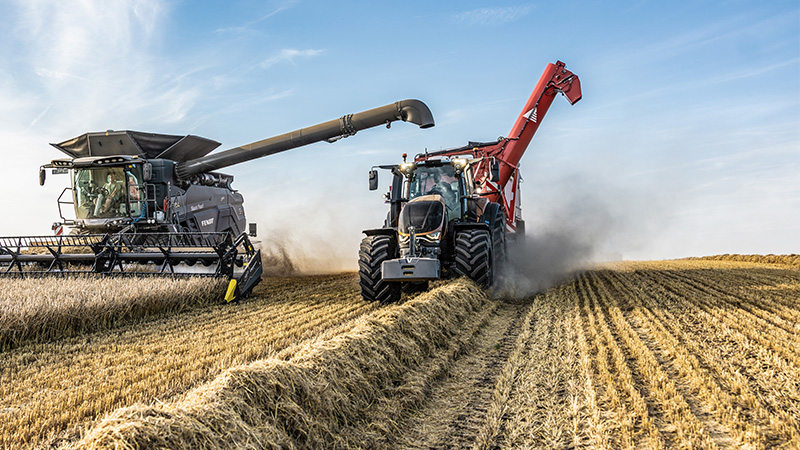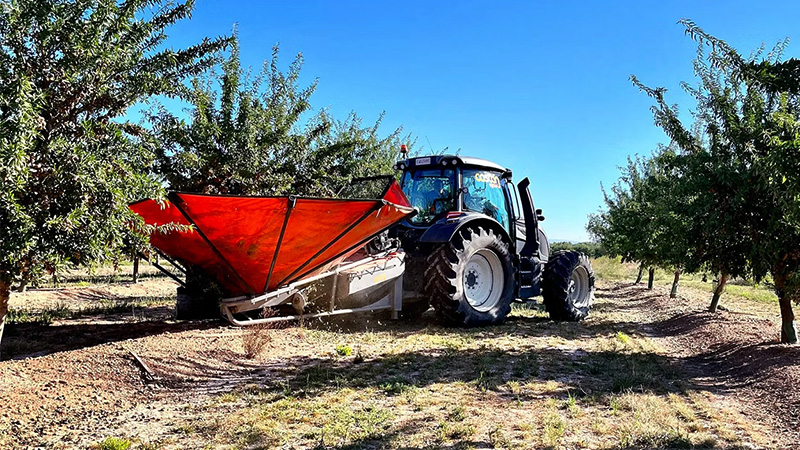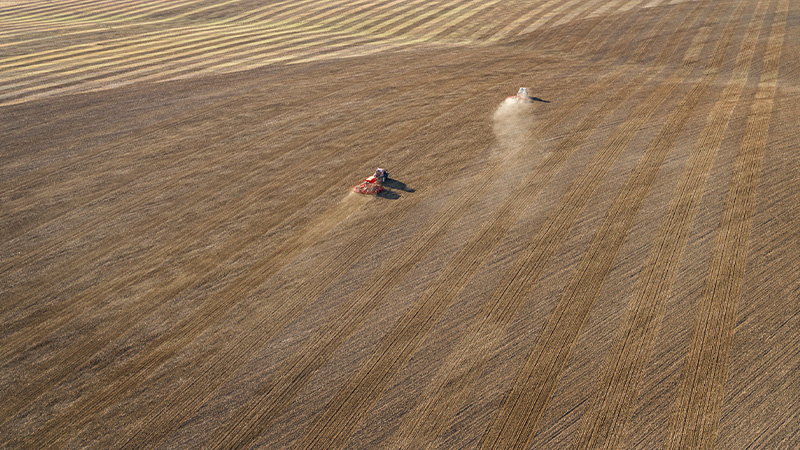Consumer pressure and agricultural policy place significant pressure on farmers to increase the volume and quality of yields while at the same time decreasing the use of pesticides and herbicides. The Farm to Fork Strategy from the European Green Deal identifies specific targets that should be met by 2030. Many national and local policies also place targets on increasing sustainability in agriculture. In this blog, we take a look at how specific Smart Farming technologies can help you achieve your sustainability goals while maximising yields and profitability.
Reduced pesticide use
The Farm to Fork Strategy sets out a target of reducing chemical and hazardous pesticide use by 50% by 2030. At the same time, consumers are becoming more wary of the use of pesticides in food production, affecting purchasing decisions. As part of a wider strategy for moving away from certain plant protection products, Smart Farming can help reduce the amount of spray used in several ways. Section Control by Valtra automatically switches off individual sections of the sprayer boom as the tractor reaches the headland. It also reduces overlaps from an average of 5% to 0. In total, using Section control can reduce application by 5-10%.
As well as automatically controlling where the spray is applied, Smart Farming can also control how much application is applied. Conditions vary within each field meaning more or less spray is required in different locations. Variable Rate Control uses prescription maps to automatically adjust the flow rate (and thus the amount) of spray delivered as the tractor moves through the field. This ensures only the right amount of application is delivered to the right place, reducing the overall amount of spray used.
Valtra Variable Rate Control automatically adjusts the flow rate in accordance with prescription maps, saving application and increasing yields
Reduced fertilizer use
The EU Farm to Fork Strategy identifies a goal of reducing the overall use of fertilizer by 20% while simultaneously ensuring there is no deterioration in soil fertility. With fertilizer spray application, Section Control eliminates pass-to-pass overlaps and prevents wastage by automatically switching off sections of the boom as they pass the headland. Not only does this reduce the total amount of fertilizer used, but it also prevents crop burn from over application, maximising yield. By ensuring the boom is switched off as it crosses the headland, spray drift outside the field can be minimised, preventing excess nutrients from entering the wider environment. Variable Rate Control can also reduce the amount of liquid fertilizer applied in the same way as with the spray application mentioned above.
Increased productivity
Population growth continues to increase demand for food production. At the same time, the Farm to Fork Strategy sets out an aim to achieve 25% of total farmland under organic farming by 2030. Smart Farming can help in increasing yields per hectare through the precision application of spray and fertilizer and improving soil health and fertility. Valtra Guide directs and steers your tractor along predefined waylines. The same waylines can be used each time. Not driving over soil outside these waylines prevents it from becoming compacted. Less soil compaction results in better drainage, improved aeration, and better microbial health – all of which improve yield.
Valtra Guide not only reduces stress by steering the tractor for you, but also minimises soil compaction by ensuring the tractor sticks to the same waylines
Monitoring and reporting
Many local and national schemes can help farmers demonstrate commitment to sustainability. Often partners in supply chains require assurances on a farm’s sustainable practices. In turn, achieving these goals can open up new markets and provide a competitive edge. However, certification, accreditation, and compliance rely on delivering accurate and precise data. Automating data collection, processing, and transferring to the farm office can make the process much easier and quicker. TaskDoc and TaskDoc Pro by Valtra automatically record tasks completed by your tractor and transfers the data to your Farm Management Information System (FMIS) system. Precise prescription maps for each field and each application or task can be created in the office and uploaded to SmartTouch. All the operator needs to do is start working. All your data is held securely and can be accessed anywhere.
Towards carbon neutrality
Even management of larger fleets can be simplified with Smart Farming. For example, with Valtra Connect you can see in real-time where all your connected tractors are, and build usage statistics that help you identify when tractors are idling or using the most fuel. The resulting improvements in logistics and reduced fuel consumption can help you reach your carbon neutrality goals.
Smart Farming solutions to achieving sustainability goals
Achieving sustainability goals such as reducing pesticide and fertilizer usage and working towards carbon neutrality can have positive effects on your business. Solutions such as Valtra Guide, Section Control, and Variable Rate Control help ensure only the right amount of application is delivered to the right place, while also minimising soil compaction. Technologies like Valtra Connect and TaskDoc drive efficiencies and help automate document production. The data automatically generated through Valtra’s Smart Farming solutions can assist in reporting for accreditation and compliance, ensuring you maintain a competitive edge and potentially opening up new markets.
For more detailed estimates on the savings Valtra’s Smart Farming solutions could give you download our Smart Farming White Paper today.
You may also be interested in reading:
- Smart Farming A Brief History
- How to Future Proof your Tractor
- The Top Ten Benefits of Smart Farming
- Sustainability at Valtra



